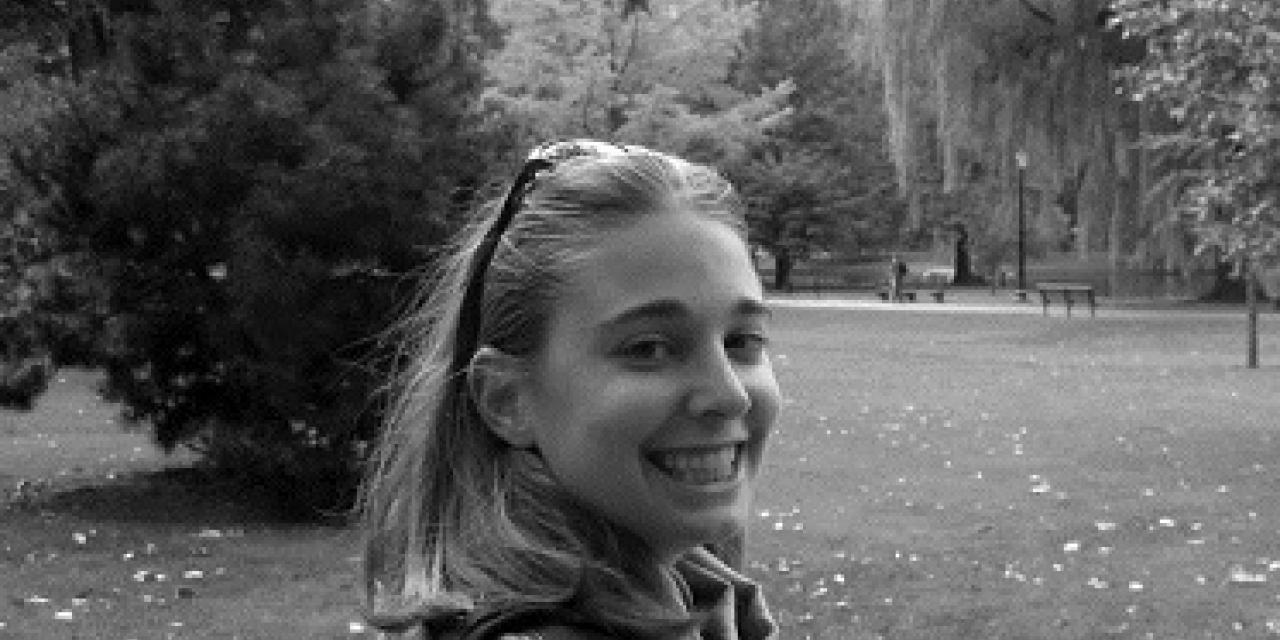Victoria Emily Jones is a blogger and copyeditor with a deep knowledge of global Christian art. She is a member of Christians in the Visual Arts (CIVA) and a contributor to ArtWay.eu. In this edited conversation, she describes good first steps for congregations that want to use more arts in worship.
When you post to your Art & Theology blog, who do you hope will see it and what do you hope they’ll do with it?
When I conceived of Art & Theology, I had in mind Protestants, who are typically undernourished when it comes to visual art and, for historical reasons, may even be wary of using it in worship contexts. I hope that people from conservative traditions, like the one I grew up in, will visit my website and see that art has something vital to offer the contemporary life of faith. It need not be feared.
I want to expand people’s conception of “Christian art,” showing them how it encompasses various styles, media, countries and time periods. It is not limited to Byzantine icons and Christian bookstore wall art.
I hope my blog also shows people that gazing—deep, attentive looking—can be a spiritual practice, and that they can find a way to integrate this practice into their time with God. Maybe they’ll be inspired to visit their local art museum and practice reading and interpreting images. Maybe they’ll consider supporting an artist by purchasing a work of original art for their home or commissioning a new one for their church.
Your blog’s tagline is “Revitalizing the Christian imagination through painting, poetry, music, and more.” What might or does happen in Christians and congregations who are open to revitalizing imagination?
One of the major gifts art gives to the church is to nurture the imagination, which enables us to more fully inhabit God’s story. We compose images in our heads all the time; for artists, this act is a discipline, and they are bold and vulnerable enough to share these images with the world by committing them to material. Our own imaginations are limited, so we need others to help give us a fuller picture of who God is. When scripture becomes dry to us, or when we become too familiar with it, artists remind us that there’s always something new to see. They show us what was, what is and what could be. When individuals or congregations open themselves up to the imaginings of artists, they will find their views of God and humanity enlarged.
Why did you create your Advent art slideshow and devotional booklet?
In June 2016, at the recommendation of my colleague Paul Neeley, I attended a seminar at Calvin College called Bodies of Christ: Visualizing Jesus Then and Now. Its director, Ed Blum, encouraged participants to develop a resource for either an academic audience or a congregation interested in exploring the visual dimension of faith. To get our creative juices flowing, Peggy Parker, a practicing artist and seminary professor, showed us a Lenten slideshow she had used with students and parishioners, in which she set art images to a prayer text. I used her model and created my own slideshow for Advent.
Can you share a story from a church that is using it?
I haven’t yet heard stories from churches using these resources, but one woman in my church is getting her kids more involved by creating activities to go with the images.
 For example, there are three key images in my slideshow and booklet by Ecuadorian painter Eduardo Kingman. This mom is having her kids craft an Advent “candle” that is like the one the hooded woman holds—using toilet paper rolls, leaves, flowers, cotton balls and tissue paper. Then the kids will form a procession while singing “O Come, O Come, Immanuel.” To reinforce Kingman’s image of the beggar woman, she’ll be using an actual empty bowl as an object lesson on poverty—both material and spiritual. She will bring her kids along to distribute bags of food and other essentials to homeless people in Baltimore. And because hands are so prominent in Kingman’s work, she’s planned an exercise that explores the different things hands can do and the ways they can communicate.
For example, there are three key images in my slideshow and booklet by Ecuadorian painter Eduardo Kingman. This mom is having her kids craft an Advent “candle” that is like the one the hooded woman holds—using toilet paper rolls, leaves, flowers, cotton balls and tissue paper. Then the kids will form a procession while singing “O Come, O Come, Immanuel.” To reinforce Kingman’s image of the beggar woman, she’ll be using an actual empty bowl as an object lesson on poverty—both material and spiritual. She will bring her kids along to distribute bags of food and other essentials to homeless people in Baltimore. And because hands are so prominent in Kingman’s work, she’s planned an exercise that explores the different things hands can do and the ways they can communicate.
She’s also having her kids identify all the artists’ home countries on a world map and pray for the people in those countries.
Do you plan to do art slideshows and devotionals for Lent or other liturgical seasons?
I probably won’t be making a Lenten devotional for 2017 because of the time commitment—at least not in the same format. But I will be posting art weekly to my blog to correspond with some Lenten themes and writing about it in a devotional way. I’m hoping to receive feedback after the holidays on how the two Advent resources were received. Learning what worked and what didn’t will inform my future direction. Next time, I think I would do a slideshow with fewer images and then explore each image more in depth over the course of a week, perhaps also incorporating music.
What’s an idea or insight from the Bodies of Christ summer seminar that a church worship planner could try?
I think being more intentional about the visuals chosen for slides during worship would be one great step forward for churches. Instead of using stock photos, churches could pull from among the many beautiful and deeply theological paintings in the public domain. Contemporary Christian artists are usually happy to let you use one of their images in worship, if you ask them.
You should also draw on the expertise of those in your local church. For example, Richard C. Choe, a fellow seminar participant, creates contemplative photographs for his congregation to sit with. James Romaine, an art historian, publishes short videos on his YouTube channel, Seeing Art History, that introduce people with no art background to famous works of art, mostly religious.
One key takeaway for me is to not denigrate the images that some people hold dear. They may not have high artistic merit and may seem ridiculously cheesy or sentimental to you, but if someone is drawn to a particular image and feels closer to God because of it, so be it. I will continue exposing the church to more varied, and sometimes challenging, images, hoping that some will take spiritual root. But I have become more sensitive to the attachments Christians have to works that I myself do not.
Picture a worship planner without your deep knowledge of art and theology. How might he or she start using resources from your blog in planning public worship?
I hope that worship planners reading my blog will encounter a piece of art that speaks to them and will want to share it with their congregation. If it’s a song, maybe they’ll seek permission to use it in congregational worship or as the soundtrack to a slideshow. They might project a piece of visual art during a Scripture reading or use it as a bulletin cover, with a short description printed inside. Maybe a poem is lifted up as a prayer or as biblical commentary. Maybe a film clip is relevant to the pastor’s sermon that week! I don’t yet have a lot of concrete resources for churches on my blog, but that’s definitely on my horizon. Right now, I just want to put people in touch with the vast field of Christian art. Hopefully worship planners will see that “worship” is larger than just music—that any art form can be used to guide hearts and minds into God’s presence.
LEARN MORE
Explore Victoria Emily Jones’ Art & Theology blog, especially its Advent art slideshow and devotional booklet and list of contemporary global Christian artists. Follow her on Twitter (@artandtheology) and Facebook. Check out James Romaine’s “Art for Advent 2016” videos. Paul Neeley’s Global Christian Worship blog features music and art from around the world.

